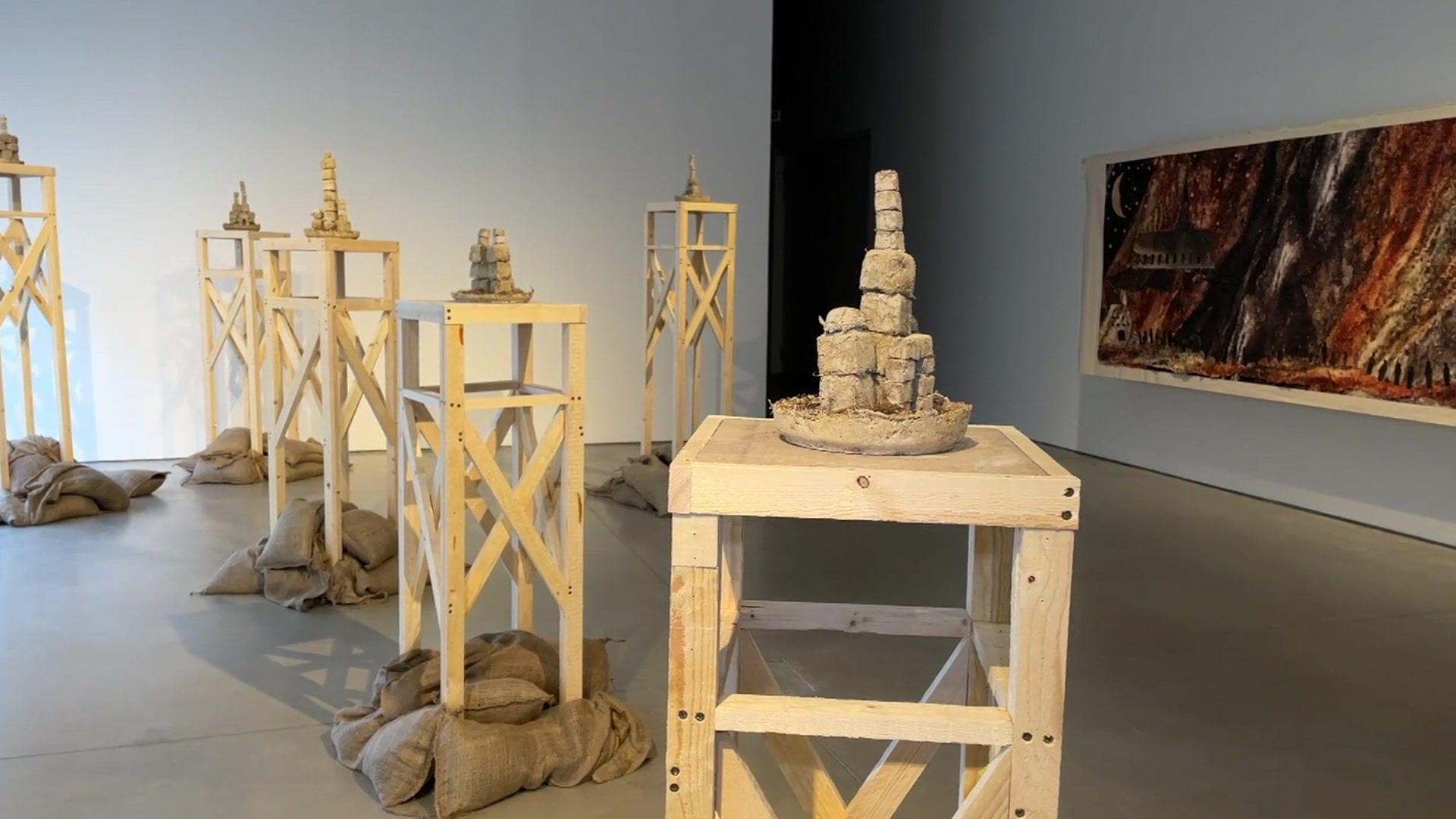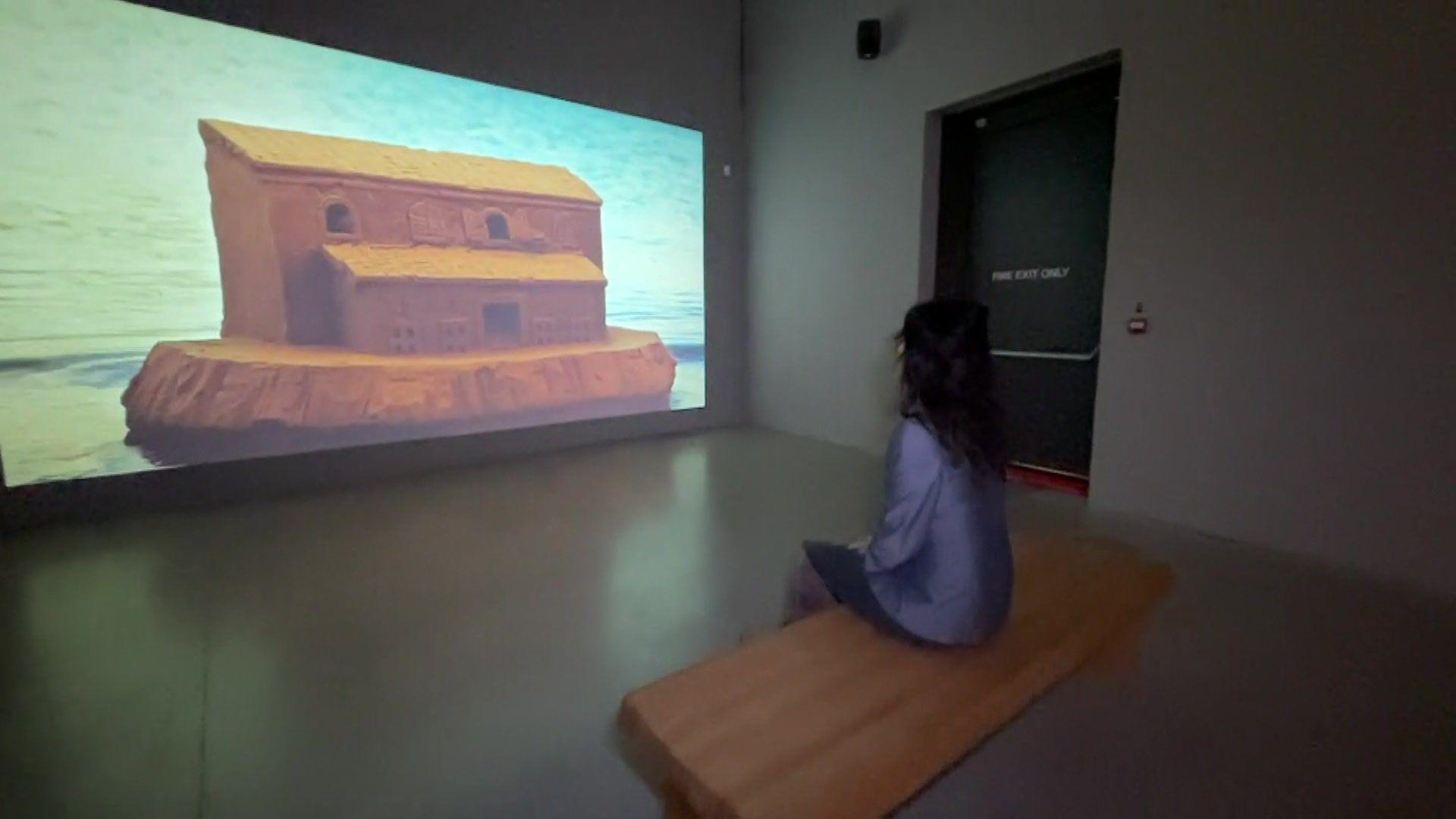The links between Mauritius and the Isle of Wight

The exhibition looks at connections between an island in the English Channel and one in the Indian Ocean
- Published
A new art exhibition draws links between two islands more than 6,000 miles (9,700km) apart.
Created by artist Gayle Chong Kwan, A Pocket Full of Sand explores the historical and contemporary connections between Mauritius and the Isle of Wight.
Ms Chong Kwan, who is of Chinese Mauritian and Scottish heritage, said the connections between the two islands - ranging from military links to geological ones - "have proved really interesting".
The exhibition runs at the John Hansard Gallery in Southampton until Saturday 11 May.

Artist Gayle Chong Kwan said the comparisons between the two islands were "really interesting"
The display includes moving images, photography and sculpture, the gallery said.
It also includes an exhibit where members of the public are encouraged to eat a sugar lump to get the "sensory sort of taste aspect" from the exhibition, Ms Chong Kwan said.
"It might leave a slightly bitter taste when they think about the different sort of complex histories," she said.
It also includes structures made from bagasse - a by-product of sugar production - in a further nod to the island's history of sugar plantations using slave labour.

There are intended to be many immersive elements of the exhibition
The exhibition draws comparisons between the Isle of Wight's iconic coloured sand at Alum Bay, and Mauritius's tourism industry, which is centered "around their coloured earth", the artist said.
There are also links to be made with the infrastructure of the two islands.
The exhibition includes structures that are "a combination of control buildings or even maybe reflecting the forts around the Isle of Wight or the Martello towers, which were a colonial legacy in Mauritius", Ms Chong Kwan said.
And the Isle of Wight's Carisbrooke Castle was, at one point, considered as a potential training ground for the East India Company army, the gallery added.
A promotional tourist film for the Isle of Wight and a British film showing colonial life in Mauritius are also used to compare the lives of two young boys living in the middle of the 20th Century on the two islands.
The exhibition will run for three months.
Follow BBC South on Facebook, external, X, external, or Instagram, external. Send your story ideas to south.newsonline@bbc.co.uk, external.